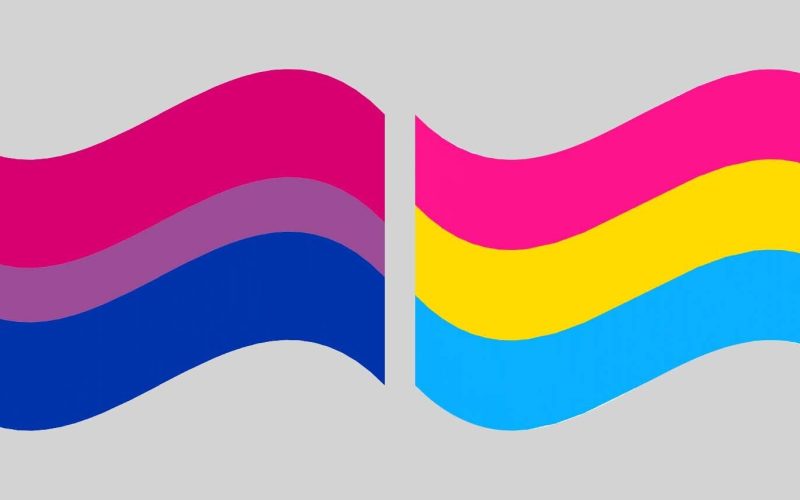The community of LGBTQ kept increasing at a fast pace, which bred new terms such as pansexual.
People find it hard to understand the difference between bisexual and pansexual because they’re related and found under the same umbrella.
The focus of this article is to clear your doubts about what bisexual and pansexual mean to help you understand the difference between them.
Difference Between Bisexual and Pansexual
Let’s begin by explaining who bisexual and pansexual people are before going to the difference.
Definition of Bisexuality
Bisexuality is romantic attraction, sexual attraction, or sexual behavior toward both males and females or to multiple genders.
This sexual identity started way back in 1798 when people used it to describe someone who possesses both male and female personalities.
Today, bisexual people are those who have a romantic attraction to multiple genders.
It’s more than getting attracted to male and female gender, and it doesn’t mean they can’t have a physical attraction to non-binary people.
Tip: A non-binary person doesn’t fit in the category of a man or a woman. They may have a male or female element blend but don’t identify with any gender.
Who is a Pansexual?
Pansexual folks are those whose attraction to others goes way beyond their gender. They pay little or no attention to someone’s gender.
Pansexual individuals have a sexual, romantic, or emotional attraction toward people, regardless of where they are in the gender spectrum.
Gender preferences don’t hold sway here as they often refer to themselves as gender-blind.
People in this spectrum of sexuality assert that gender and sex are not determining factors in their romantic or sexual attraction to others.
This means that people in this category are more interested in someone’s personality than their gender, so you’ve got to have the personality a pansexual wants to attract them; your gender means nothing to them.
What is the Main Difference Between Bisexual and Pansexual?
There’s not much difference between both sexual identities. What’s more? Pansexual is under the bisexual umbrella, and both get attracted to multiple and diverse gender groups.
The only difference between bisexual and pansexual is that pansexuals pay less attention to someone’s gender, while bisexuals go for a specific set of genders.
Above all, just because pansexuals get attracted to others based on their personality doesn’t mean they fall in love with everyone they meet.
Also, different bisexuals have a liken to a unique set of genders.
A bisexual person may be a non-binary person, while the next bisexual person may not get attracted to them.
Bisexual and Pansexual Flag
To further understand the difference between bisexual and pansexual, a quick peek into their flags will go a long way to help.
Bisexual Flag
The Bisexual flag comprises three amazing colors: Magenta, Blue, and Lavender.
The Magenta color stands for same-sex attraction, i.e., gay or lesbianism; then the Blue color stands for attraction toward people of a different gender.
Lavender is a mixture of blue and magenta, and it represents attraction toward the various genders.
A closer look at the flag tells that the purple pixels of the color mix unknowingly into pink and blue. This explains inarguably how bisexuals blend unnoticeably into the lesbian, gay, and straight people communities alike.
The credit for this flag goes to Michael Page, an LGBTQ community activist. In 1998, he formulated the flag for bisexuals so they would get recognition in the community of LGBTQ and society at large.
Michael Page declared “In designing the Bi Pride Flag, I selected the colors and overlap patterns of the ‘bi angles’ symbol.”
Liz Nania designed the bi angles for the Boston bi woman’s community, which inspired the foundation of the bisexual flag.
During World War 2, gay men symbolized the pink color while socials such as the non-conformists and sex workers used the black triangle.
Pansexual Flag
Just like the bisexual flag, formulate the pansexual flag with three awesome colors. They include Blue, Pink, and Yellow colors, respectively.
Blue stands for attraction to men only, while Pink means attraction to women. Lastly, the Yellow color means attraction to non-binary people.
People recognized the pansexual flag for the first time online in 2010. The flag’s credit goes to Jasper, a super-talented artist.
For more interesting information on the origin of the pansexual flag, you can check this google thread.
Common Misconceptions Regarding the Bisexuals and Pansexuals
These misconceptions have done nothing but increase people’s confusion as regards the distinction between bisexuals and pansexuals.
Which are;
1. Several people claim bisexuals are transphobic because they believe bisexuals mean attraction towards cisgenders.
This Is outright wrong because a gender label means different things to different people. So to claim someone is transphobic, you’ll need to understand what sexuality means to the person that identifies with it.
2. Few heterosexuals believe queer people are attracted to them despite their sexual orientations.
This is also wrong because attraction toward all genders doesn’t mean attraction to everyone.
Above all, these misconceptions that both sexualities can fall in love with just anybody every time stem from homophobia and biphobia.
Another Tip; A Queer is someone whose sexual orientation isn’t heterosexual. At the same time, heterosexuals are straight people who are attracted to people of the opposite sex.
Right Sexual Label to Use
No doubt, the two sexual labels are very identical, which can make sticking to one sexuality quite difficult. However, you shouldn’t worry your head over that.
Relax and think deeply about the two in the comfort of your home. You can also conduct more research on both.
Ask yourself which one sits well with you. Pick the one you’d be proud to proclaim in public.
You’re free to change your mind anytime because a strong LGBTQ belief is that sexuality is largely fluid.
Nevertheless, bear in mind that despite the slight difference between bisexual and pansexual, none is better than the other. It’s simply a matter of choice!
In addition, because bisexuality was in existence before the term “pansexual” arrived, the younger generation prefers to use pansexuality.
On the other hand, the older generation in the LGBTQ community stuck to using bisexuality.








